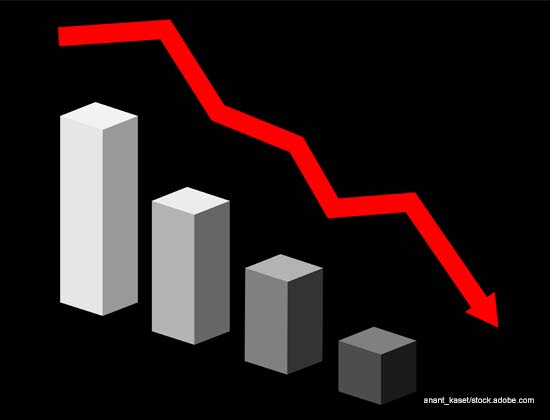Seasonal declines in freight, coupled with the imminent risk of tariffs, negatively affected trucking employment in February, suggesting that further job losses may be imminent.
According to the most recent data from the Bureau of Labor Statistics, approximately 2,000 trucking positions were cut from the workforce in February. This trend continues the industry’s elimination of excess drivers that arose after a boom in new motor carriers post-pandemic. Since January 2023, trucking employment has consistently decreased in all but five months.
Preliminary reports indicated a rebound in trucking jobs from November to January. However, revised figures show that the net gain in jobs since October is only 600, a stark contrast to the previously reported increase of 7,000 jobs in January. Compared to last year, the trucking sector has lost over 15,000 driver positions since February.
David Spencer, vice president of market intelligence at Arrive Logistics, noted that the unclear signals from the latest employment report align with fluctuations in freight market sentiment. He explained that seasonal slowdowns and uncertainty regarding the impact of tariffs have dampened expectations compared to the previous month, when there was a more optimistic view of trucking conditions.
Downward Trends Could Continue for Trucking Jobs
“Going forward, the most probable scenario appears to be a gradual decline in overall employment as trucking firms manage reduced profitability and aim to optimize their operations until there is a notable change in market conditions,” Spencer advised.
Jason Miller, an associate professor of supply chain management at Michigan State University’s Eli Broad College of Business, indicated that while President Donald Trump’s tariffs may benefit certain trucking firms, the overall losses are anticipated to surpass any gains. He suggested that trucking companies should prepare for potential adverse scenarios as they approach 2025.
Future Impacts of Tariffs on Trucking Industry Recovery
The Owner-Operator Independent Drivers Association remarked that while it’s premature to determine the full effects of the tariffs on the trucking industry, they could hinder the expected recovery from the current freight recession. “Tariffs on trade partners in America have the potential to slow the recovery for small-business truckers who have felt the impact of the freight recession,” the Association stated, adding that they will continue to monitor these policies as they evolve.
In the broader transportation sector, nearly 18,000 jobs were added in February, largely due to a surge of 23,500 courier and messenger roles. Most subsectors saw little change, though air transport added 3,500 jobs, contrasted with losses in transit/ground passenger transport (down 4,100) and warehousing/storage (down 3,100).
Month-to-month, wages in the transportation sector increased, with average weekly earnings rising by $1.52 to $1,186.43. Year-over-year, hourly earnings grew from $30.38 to $31.10. For production and nonsupervisory employees, weekly earnings saw a slight increase from $1,115.54 to $1,116.99, with hourly earnings up 55 cents to $29.59.
Overall, the nation added 151,000 jobs across all industries, which was slightly below economists’ expectations of 160,000, as reported by financial data company FactSet. Some economists assert that unpredictable trade policies under Trump are creating uncertainty for businesses, leading to hesitancy in hiring. The unemployment rate rose by 0.1 percentage point to 4.1%. In comparison to the previous year, the transportation sector’s unemployment rate fell by 1.2 percentage points to 4.7%, still higher than the pre-pandemic level of 2.8% in December 2019 but markedly lower than the peak of 15.7% recorded in May and July 2020.


